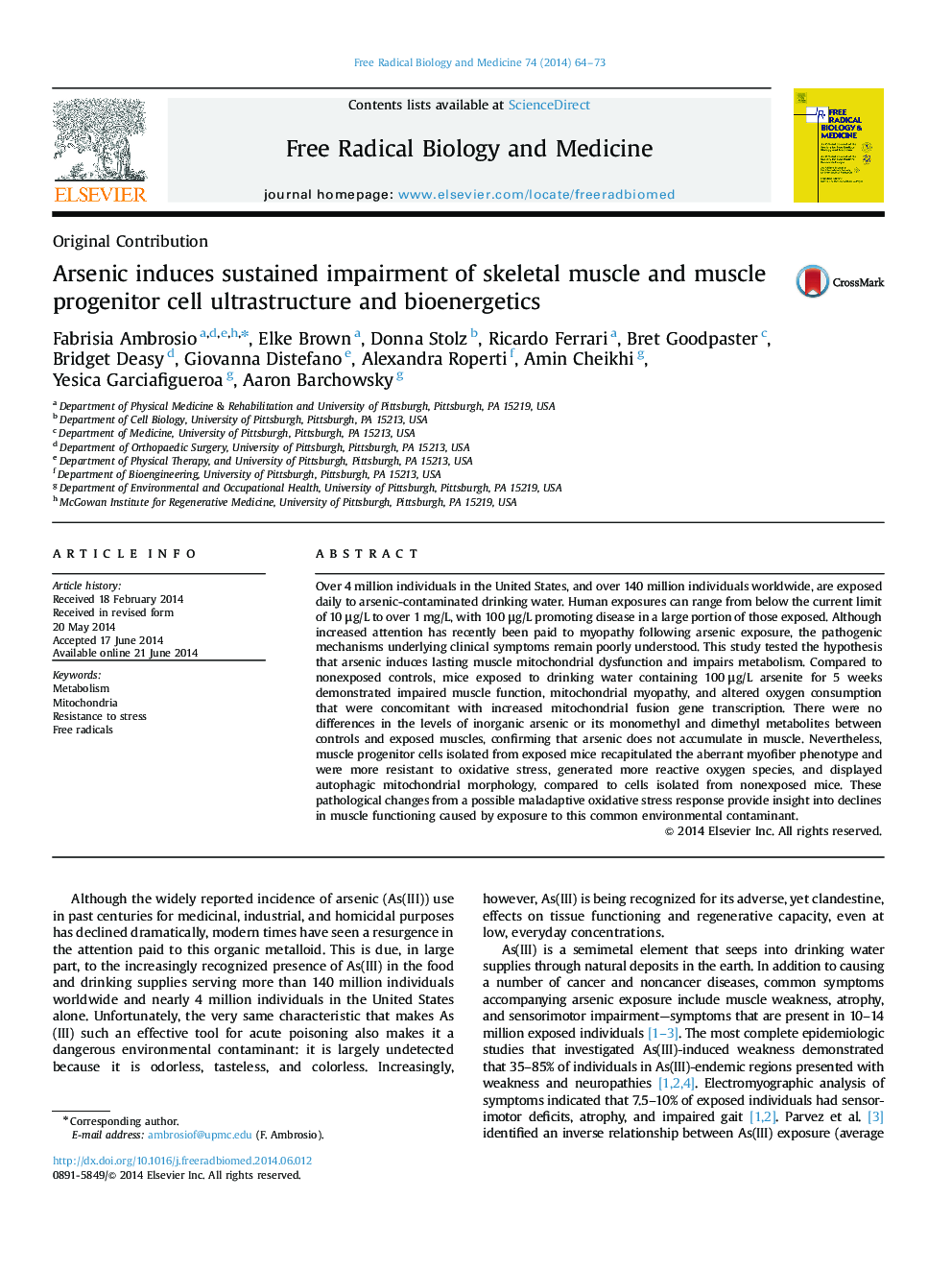| کد مقاله | کد نشریه | سال انتشار | مقاله انگلیسی | نسخه تمام متن |
|---|---|---|---|---|
| 1908295 | 1534968 | 2014 | 10 صفحه PDF | دانلود رایگان |
• Mitochondrial damage and dysfunction underlie arsenic-induced muscle pathogenesis.
• Muscle and muscle progenitor cell bioenergetics are impaired by arsenic.
• Arsenic-impaired mitochondrial function causes a maladaptive response to oxidants.
• The maladaptive response decreased force-producing capacity and fatigue recovery.
• The maladaptive bioenergetics could explain arsenic-promoted muscle disease.
Over 4 million individuals in the United States, and over 140 million individuals worldwide, are exposed daily to arsenic-contaminated drinking water. Human exposures can range from below the current limit of 10 μg/L to over 1 mg/L, with 100 μg/L promoting disease in a large portion of those exposed. Although increased attention has recently been paid to myopathy following arsenic exposure, the pathogenic mechanisms underlying clinical symptoms remain poorly understood. This study tested the hypothesis that arsenic induces lasting muscle mitochondrial dysfunction and impairs metabolism. Compared to nonexposed controls, mice exposed to drinking water containing 100 μg/L arsenite for 5 weeks demonstrated impaired muscle function, mitochondrial myopathy, and altered oxygen consumption that were concomitant with increased mitochondrial fusion gene transcription. There were no differences in the levels of inorganic arsenic or its monomethyl and dimethyl metabolites between controls and exposed muscles, confirming that arsenic does not accumulate in muscle. Nevertheless, muscle progenitor cells isolated from exposed mice recapitulated the aberrant myofiber phenotype and were more resistant to oxidative stress, generated more reactive oxygen species, and displayed autophagic mitochondrial morphology, compared to cells isolated from nonexposed mice. These pathological changes from a possible maladaptive oxidative stress response provide insight into declines in muscle functioning caused by exposure to this common environmental contaminant.
Journal: Free Radical Biology and Medicine - Volume 74, September 2014, Pages 64–73
